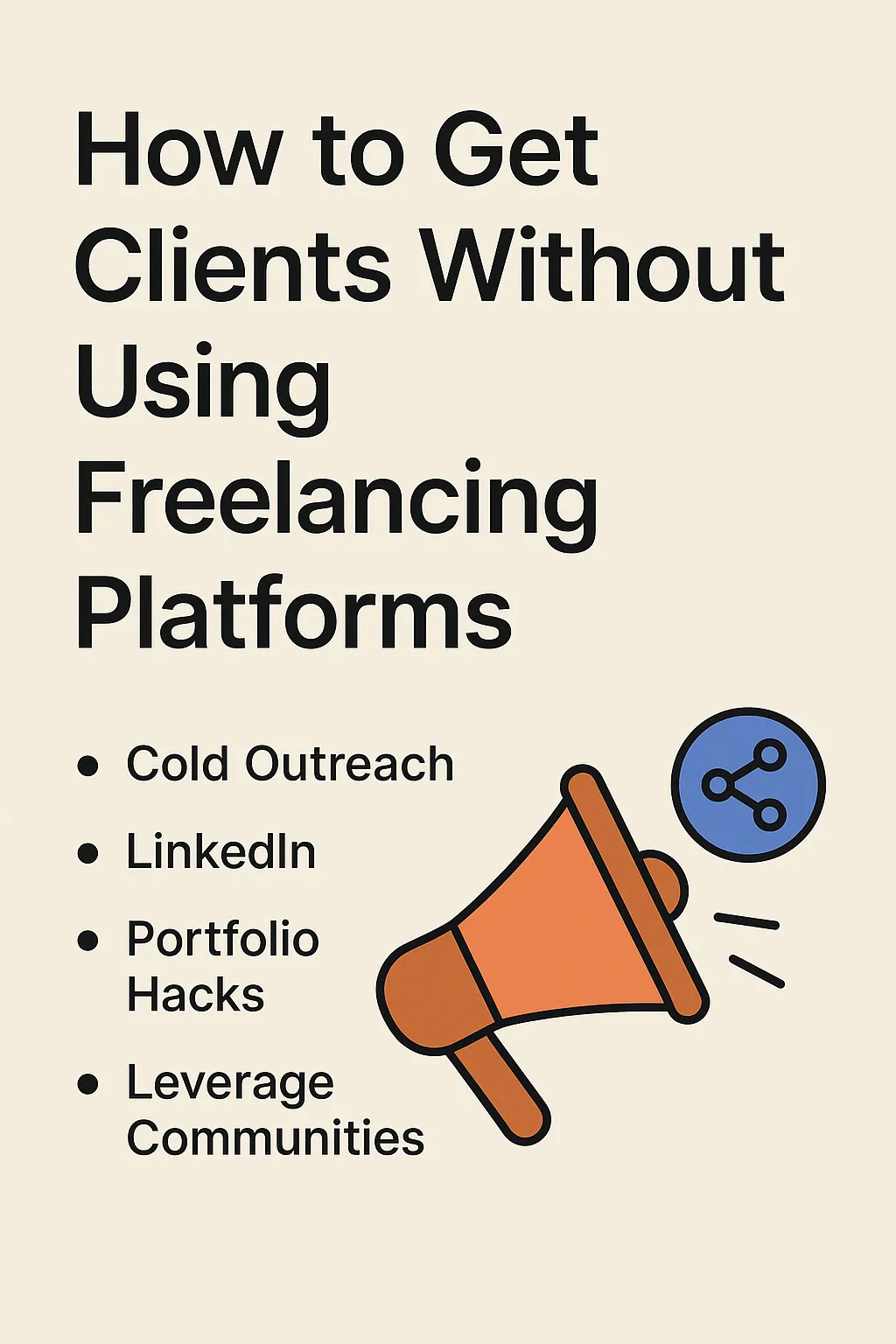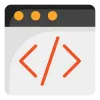5 min read How to Get Clients Without Freelancing Platforms: Proven Outreach & LinkedIn Tactics

🚀 How to Get Clients Without Using Freelancing Platforms
Freelancing platforms like Upwork, Fiverr, and Freelancer can be helpful, but they’re not the only way to land clients. In fact, many top freelancers never use these platforms at all — instead, they find clients through smarter, more direct strategies. If you're tired of low-paying gigs and platform competition, this guide is for you.
Here are proven ways to get clients without relying on freelancing websites:
1. 📧 Cold Outreach Done Right
Cold outreach isn’t dead — it just needs to be done strategically. The trick is to be personalized, brief, and clear on the value you bring.
💡 How to Do It:
- Research your ideal client (niche, pain points, business size).
- Find decision-makers (LinkedIn, company websites).
- Send a short email or message explaining:
- Who you are
- What problem you solve
- A quick result you’ve delivered before
- A call-to-action (e.g., “Would you be open to a 10-min chat?”)
🔥 Pro Tip:
Use tools like Hunter.io, Apollo, or Snov.io to find verified emails.
2. 💼 Turn LinkedIn Into a Lead Magnet
LinkedIn isn’t just for job seekers — it’s a goldmine for freelancers who know how to use it.
✅ Optimize Your Profile:
- Professional photo + banner
- Keyword-rich headline (“Helping eCommerce brands increase sales through email marketing”)
- Strong ‘About’ section (focus on results and clients you’ve helped)
🔗 Build Your Network:
- Connect with people in your niche
- Send friendly DMs (not salesy)
- Post valuable content 2–3x per week
🧲 Attract Inbound Leads:
- Share case studies, client wins, or tips
- Use hashtags and tag relevant people
- Comment on posts from people in your target industry
3. 🌐 Build a Portfolio That Sells
Clients judge your skills by what they can see. Even if you don’t have big-name clients yet, a smart portfolio can do the job.
📁 What to Include:
- 2–3 real or mock projects showing your best work
- Clear explanation of your role, process, and results
- Testimonials (even if from personal projects or collaborations)
🧠 Portfolio Hacks:
- Create a “1-page case study” for each project
- Host it on your own site or platforms like Behance, Dribbble, Notion, or even Google Docs
- Add a call-to-action: “Want similar results? Let’s chat.”
4. 📣 Leverage Communities & Groups
Be active where your clients hang out — Slack groups, Facebook communities, Discord servers, subreddits, etc.
💬 What to Do:
- Offer free advice
- Share useful content
- Answer questions and subtly pitch your service
Examples:
- Web developers can join startup groups
- Designers can help in eCommerce forums
- Writers can join content marketing communities
5. 🎯 Niche Down for Better Targeting
Instead of being a generalist, focus on one industry or problem — it’s easier to attract clients when they feel you “get them.”
Examples:
- Instead of “Web Developer,” say “Shopify Developer for Fashion Brands”
- Instead of “Copywriter,” say “Email Copywriter for SaaS Startups”
This makes your outreach, LinkedIn, and website 10x more effective.
✅ Conclusion
You don’t need Upwork or Fiverr to thrive as a freelancer. With cold outreach, a killer LinkedIn presence, a strong portfolio, and strategic networking, you can build a high-paying client base — all on your own terms.
📌 Remember:
Consistency is key. Even if you get a few "no's" in the beginning, keep refining your approach and your ideal clients will come.
























































